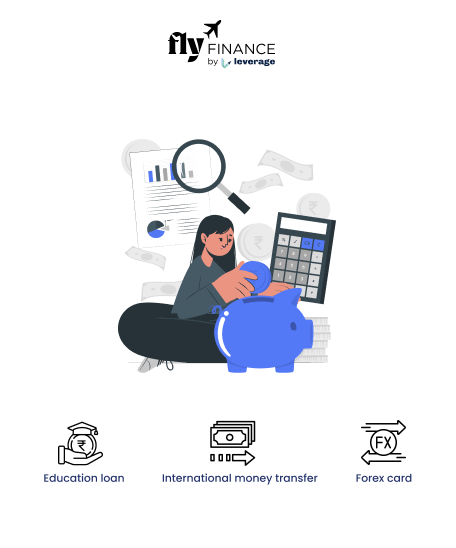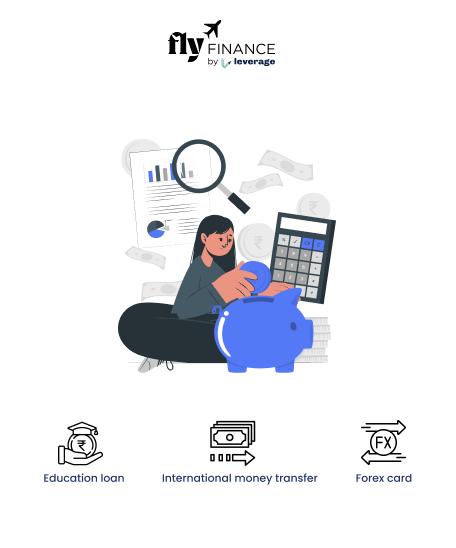International money transfers can feel daunting, but using an IBAN simplifies the process, ensuring secure and efficient transactions. Whether you’re a student, expatriate, or business professional, understanding how to transfer money using IBAN is essential for safe cross-border payments.
This guide covers everything about what is an IBAN, how to transfer money using IBAN, key tips for successful IBAN Transfers, IBAN vs. SWIFT and more. Without further ado, let’s get started!
Table of contents
What Is an IBAN Transfer?
The International Bank Account Number (IBAN) is a globally recognized system for identifying bank accounts across borders. IBAN transfer established under the ISO 13616 standard, IBANs are used in over 80 countries, including Europe, the Middle East, North Africa, and parts of Asia and the Caribbean.
A IBAN code is a common international money transfer term. An International Bank Account Number consists of up to 34 alphanumeric characters, including:
- Country code (e.g., “GB” for the United Kingdom)
- Check digits for validation
- Bank and branch identifier
- Domestic account number
Each country has a unique IBAN structure.
For example, a German IBAN might look like DE89370400440532013000, while a UK IBAN could be GB29NWBK60161331926819.
Why Use an IBAN?
IBANs offer distinct advantages for international wire transfer, making them a preferred choice for many users. By standardizing account identification, they enhance the efficiency and security of cross-border payments. Here are the key benefits of wire transfer of using an IBAN:
- Accuracy: Reduces errors in identifying bank accounts.
- Speed: Facilitates faster processing of international payments.
- Security: Standardized format minimizes fraud risks.
- Cost-efficiency: Often lowers fees compared to traditional methods, especially within the Single Euro Payments Area (SEPA).
Also Read: List of International Money Transfer Companies
How to Transfer Money Using IBAN?
Making an international payment with an IBAN is straightforward. However, the requirements of transferring money using IBAN may vary depending on the countries involved and the transfer provider. Here are the steps:
Step 1: Gather Required Information
To initiate money transfer using IBAN, collect the following details from your recipient:
- Full name of the account holder
- IBAN of the recipient’s bank account
- BIC/SWIFT code (required for non-SEPA transfers or specific banks)
- Bank name and address (optional, depending on the provider)
For transfers within the SEPA zone (36 countries, including EU nations, the UK, Switzerland, and Norway), typically only the IBAN is required. For non-SEPA transfers, the BIC/SWIFT code is often mandatory.
Step 2: Verify the IBAN
Before submitting the payment, use an IBAN checker to validate the recipient’s details. Online tools like those provided by IBAN.com or major banks verify the IBAN’s format and check digits, reducing the risk of errors. This step is critical to avoid delays or failed transfers.
Step 3: Choose a Transfer Provider
Select a reliable provider to process your IBAN money transfer. Options include:
- Traditional banks: Convenient but often charge higher fees (e.g., USD 10–USD 50 per transfer) and offer less favorable exchange rates.
- Online money transfer services: Providers like Wise, Revolut, or CurrencyFair specialize in international transfers, offering lower fees (often USD 1–USD 10) and competitive exchange rates.
- Fintech apps: Platforms like PayPal or Payoneer may support IBAN transfers for specific regions.
Compare fees, exchange rates, and transfer speed before deciding.
Step 4: Initiate the Transfer
Log in to your chosen provider’s platform and:
- Enter the recipient’s details (IBAN, BIC/SWIFT, etc.).
- Specify the transfer amount and currency.
- Confirm the exchange rate and fees.
- Double-check all details using an IBAN checker.
- Submit the payment.
Step 5: Track and Confirm
Most providers offer tracking tools to monitor your IBAN money transfer status. You’ll receive a confirmation once the funds reach the recipient’s account, typically within 1–5 business days for bank transfers or instantly to 2 days for fintech providers.
Key Tips for Successful IBAN Transfers
To maximize efficiency and minimize risks, follow these practical tips for IBAN transfers. These insights help you avoid common pitfalls and ensure a seamless experience.
- Double-check details: A single incorrect digit in the IBAN can delay or cancel the transfer.
- Understand SEPA vs. non-SEPA: SEPA transfers are faster and cheaper, often costing EUR 0–EUR 5, while non-SEPA transfers may incur higher fees.
- Beware of hidden fees: Some banks apply intermediary fees, especially for non-SEPA transfers.
- Use reputable providers: Stick to regulated platforms to ensure security and compliance.
Difference Between IBAN and SWIFT
Understanding the difference between IBAN and SWIFT codes is essential, as both are often used in international transfers. The table below clarifies their roles and when each is needed, helping you navigate the process with confidence.
| Feature | IBAN | SWIFT |
| Purpose | Identifies a specific bank account | Identifies a bank or financial institution |
| Format | Up to 34 alphanumeric characters (e.g., DE89 3704 0044 0532 0130 00) | 8 or 11 characters (e.g., BOFAUS3N) |
| Use Case | Required for account-level transfers | Used for routing to the correct bank |
| Geographic Scope | Over 80 countries, mainly SEPA | Global, used in over 200 countries |
Note: Both IBAN and SWIFT codes may be required for non-SEPA international transfers.
Also Read: Difference between SWIFT and SEPA: SWIFT vs SEPA
Transferring money using an IBAN is a secure, efficient, and widely accepted method for international payments. By understanding the process, verifying details, and choosing the right provider, you can save time and money while ensuring your funds reach their destination safely. For the best results, use an IBAN checker, compare transfer options, and stay informed about fees and processing times.
FAQs About IBAN Transfers
Yes, you can pay someone with just their IBAN for SEPA transfers (within the 36 SEPA countries, like the EU, UK, and Switzerland). For non-SEPA transfers, you usually need the recipient’s BIC/SWIFT code and sometimes their bank’s name and address. Always check with your transfer provider for specific requirements.
The time for an IBAN transfer depends on the provider and destination:
For SEPA transfers: Usually 1–2 business days.
Non-SEPA transfers: Typically 3–5 business days, depending on the provider and destination.
Fintech providers: Often instant to 2 days, per 2025 industry data.
You can find your IBAN:
On your online banking portal or mobile app
In your bank statement
By contacting your bank’s customer service
Yes, IBAN transfers are secure when using regulated providers. Always verify the recipient’s details and use trusted platforms to minimize risks.
Sending money via IBAN is a simple process used widely for international transfers. Here how to send money through an IBAN:
1. Collect the recipient’s full name, IBAN, and BIC/SWIFT code (if required).
2. Verify the IBAN using an online IBAN checker.
3. Choose a IBAN transfer provider (e.g., your bank or others).
4. Log in to the provider’s platform, enter the recipient’s details, specify the amount and currency, and confirm fees.
5. Submit the payment and track the transfer until it’s complete. SEPA transfers typically take 1–2 days, while non-SEPA transfers may take 3–5 days.
Yes, an IBAN can be used for international transfers in over 80 countries, including Europe, the Middle East, and parts of Asia and the Caribbean. It’s mandatory for SEPA transfers and widely used for non-SEPA transfers, often alongside a BIC/SWIFT code.
To send money to an IBAN from India, use your bank’s international transfer service (online banking, app, or branch). Provide the recipient’s IBAN, bank name, SWIFT/BIC code, and address. Ensure sufficient funds, check fees, and comply with RBI regulations (e.g., Form A2 for amounts over USD 25,000). Transfers typically take 2-5 business days.
To learn more about bank accounts for students, the best education loans, forex, banking experience for global students, or international money transfers, reach out to our experts at 1800572126 to help ease your experience with studying abroad.





























